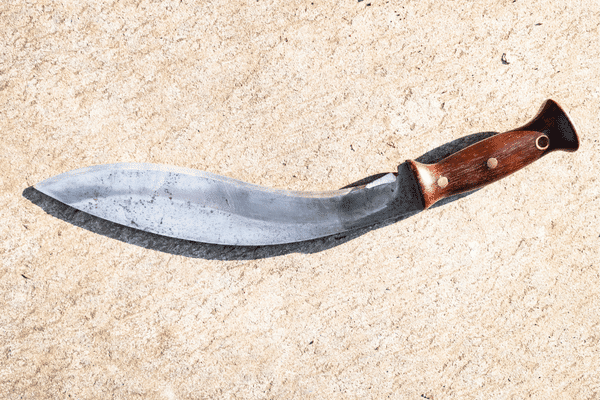Unleash Your Inner warrior: The Fascinating World of Axes.
When you think of an axe, what comes to mind? Perhaps it's the image of a rugged lumberjack, standing tall in the heart of a dense forest, poised to take down towering trees. Or maybe it's the tool of choice for a skilled craftsman, meticulously shaping wood into beautiful works of art. Regardless of your association, there's no denying the timeless allure and functionality of the axe. In this article, we'll dive into the fascinating world of axes, exploring their history, types, and the countless ways they are used today.
 |
A Brief History of the Axe:
The axes have a long and storied history dating back thousands of years. Its origins can be traced to the Stone Age when early humans crafted primitive axes from stone, using them as both tools and weapons. As technology advanced, so did the axe. Bronze and iron were eventually used to create stronger and more efficient axes, paving the way for the development of various types and styles.
Types of Axes:
Axes come in a wide range of styles, each designed for specific tasks. Here are some of the most common types:
Felling Axe: This is the classic lumberjack's axe, designed for chopping down trees. It typically has a long, curved handle and a heavy head for maximum chopping power.
Splitting Axe: As the name suggests, splitting axes are optimized for splitting logs into firewood. They have a wedge-shaped head that helps to separate wood fibers with ease.
Hatchet: Smaller and more compact than other axes, hatchets are perfect for one-handed use. They are versatile tools suitable for tasks like camping, backpacking, and even woodworking.
Double-Bit Axe: This type of axe has two cutting edges on opposite sides of the head, making it convenient for various cutting and chopping tasks.
Broad Axe: Often used in woodworking and timber framing, the broad axe has a wide, flat head that allows for precise shaping and smoothing of wood surfaces.
Adze: An adze has a curved blade designed for hollowing out wood, making it an essential tool for carving and shaping wooden objects.
Modern Uses of Axes:
While axes have a rich history in forestry and construction, they have evolved to serve a wide array of modern purposes:
- Camping and Survival: Axes are essential tools for outdoor enthusiasts. They help in setting up camps, processing firewood, and even building shelters.
Wildfire Fighting: Wildland firefighters often rely on specialized firefighting axes to create firebreaks and control wildfires.
Bushcraft and Survival Skills: Axes play a central role in bushcraft and survival training, helping individuals craft tools, build shelters, and procure food in the wilderness.
Competitive Sports: Believe it or not, axe-throwing has become a popular sport in recent years, with enthusiasts competing in leagues and tournaments worldwide.
Artistic Expression: Many artists and woodworkers use axes to create intricate sculptures and furniture pieces, showcasing the tool's versatility as a medium for creativity.
Choosing the Right Axe:
Selecting the right axe depends on your intended use. Consider factors such as size, weight, head shape, and handle material. Always prioritize safety by using protective gear like gloves and safety glasses when working with axes. If you're in search of high-quality axes made from premium materials, be sure to check out Battling Blades, where you'll find exceptional axes at affordable prices.
Conclusion
In conclusion, axes are more than just tools they are icons of human ingenuity and adaptability. From their humble stone beginnings to the modern steel and fiberglass iterations, axes have played an integral role in our history and continue to be indispensable in various facets of our lives. Whether you're a rugged outdoors enthusiast or an artistic woodworker, the axe remains a timeless companion ready to help you conquer any task with style and precision. So, go ahead and unleash your inner warrior with the world of axes awaiting your exploration.









Comments
Post a Comment